We divided the night into 3-hour shifts, with one of us on watch at the helm and the other asleep in the saloon. This is our usual double-handed setup. The table in our saloon lowers, turning the seating/dining area into a bed. It’s usually quieter than sleeping in our cabin with the waves slapping against the hull, plus it’s safer— in an emergency, we’re just a shout away from each other.
Ray woke me just before midnight to help him reef the main as the wind and waves began to pick up. I strapped myself into my PFD, grabbed a headlamp, and met him at the helm. We don’t always wake each other to reef, but when the sea state is rough, I actually prefer getting a heads up and lending a hand rather than waking up in a panic as we turn upwind and start bashing into the waves. We worked together to get the jib in, bring the main down to its second reef, and then pull the jib back out quickly. It was pitch black— no moon. It can be disorienting in heavy seas when you can’t see anything, like riding a roller coaster with your eyes closed. Clear and calm communication is key, especially when one of you just woke up… 😂 Ray got us back on course and fine-tuned the sail trim while I laid back down for the last bit of my break.
The wind began to lighten up before sunrise, so we shook out a reef and jibed, setting our course toward our destination.
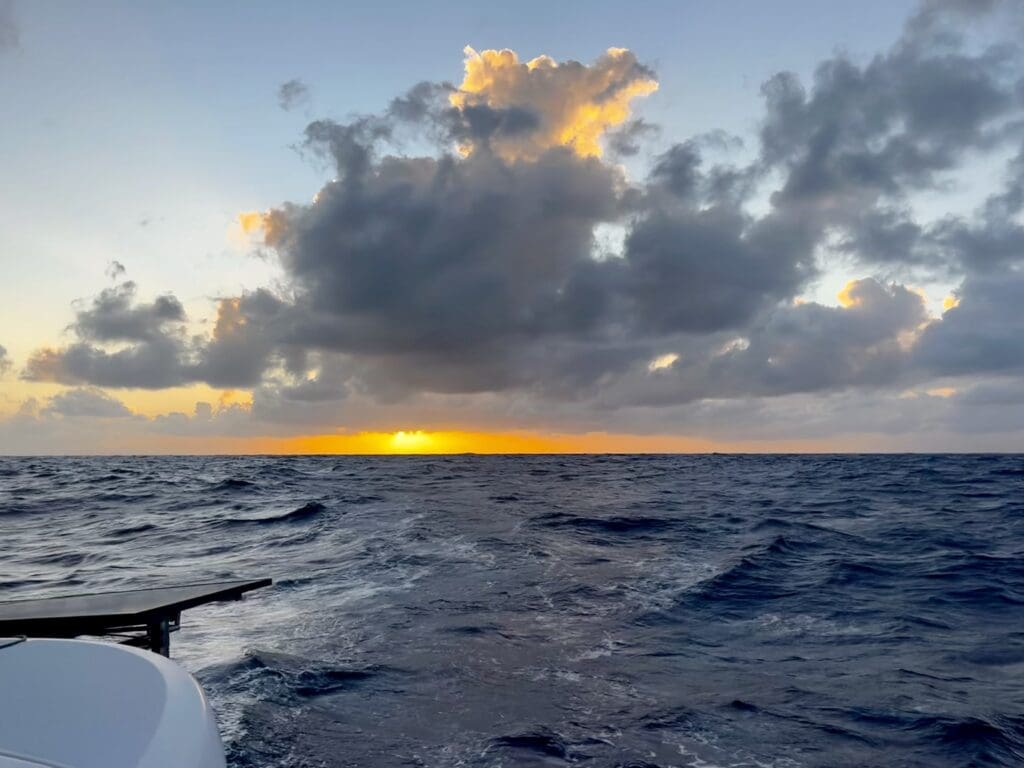
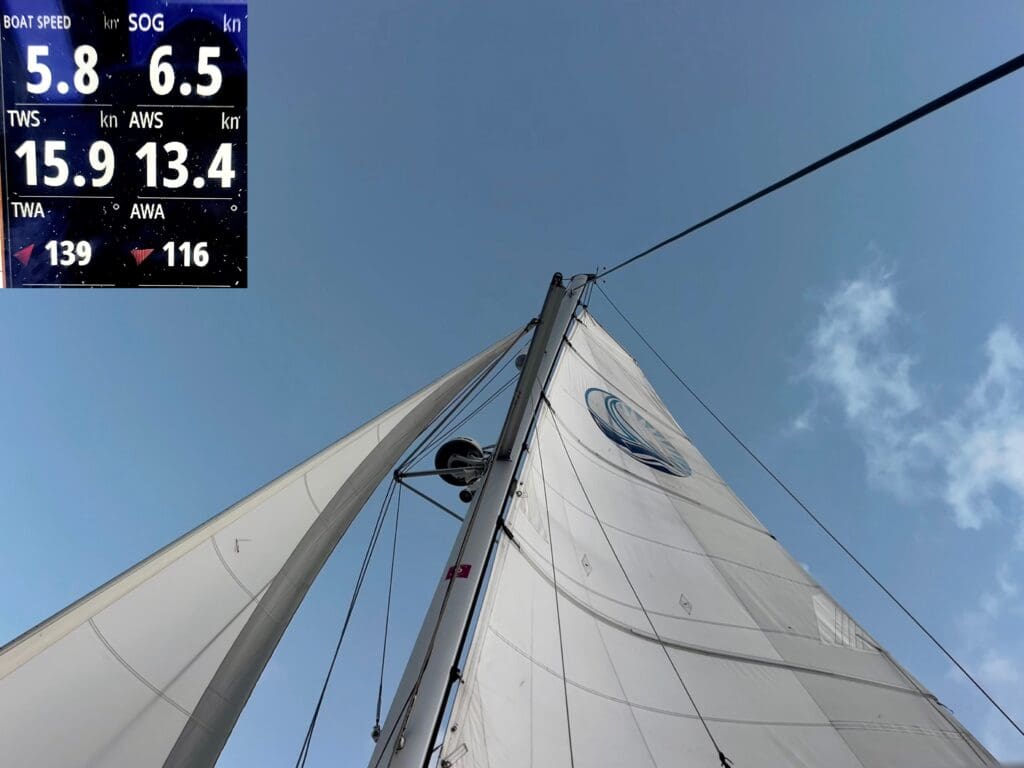
The first few nights of sleeping in shifts are always difficult. I fought off my exhaustion at the helm, listening to loud music and keeping myself busy re-flaking all our lines. I like long passages; there’s something comforting about knowing that I have time to adjust. Soon, we’ll find our groove and move up to 5-hour shifts, and it will all feel easier. This discomfort is temporary.
We had turned our inverter off overnight to conserve power. Ray turned it back on for a few hours this morning so we could connect to the internet. We read about two more catamarans whose crew required emergency rescue in the area. We weren’t able to find details about the cause of their emergencies. We checked in with our friends and family before turning the inverter off again since our sails were shading the solar panels. We continued switching off at the helm and sleeping for the rest of the afternoon as Sabado cruised down 9ft waves. The day felt like a blur: eat, sleep, adjust the sails, repeat.
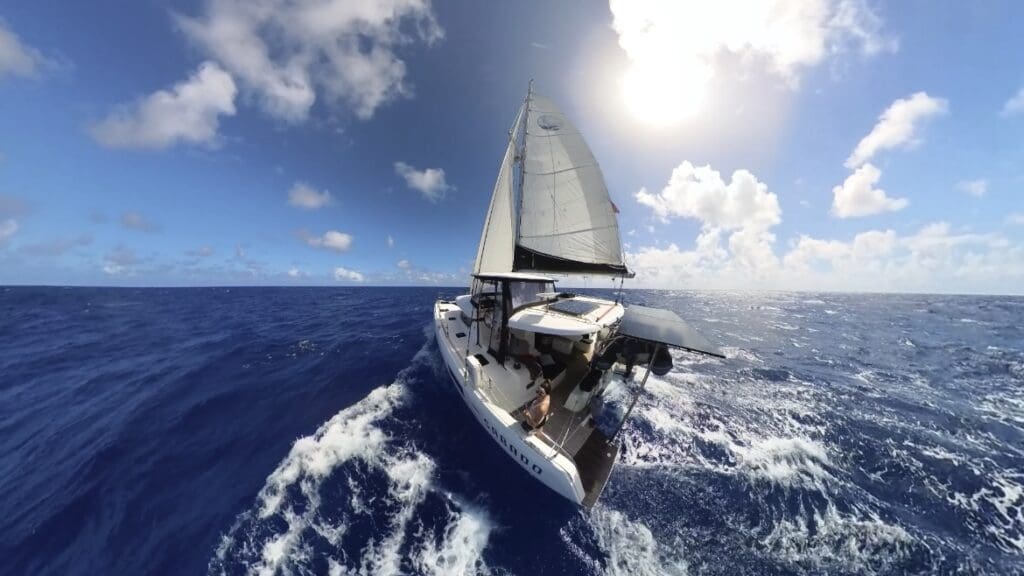
Around 4pm we had someone hail us on the radio. We hadn’t seen a ship since we’d left Bora Bora— who was calling? I walked to the helm to listen as Ray responded. It was a French Navy aircraft. They told us they would fly over us, so we stood outside and waived. They asked where we came from, where we were headed, how many people were on board, and how our sail was going. Ray answered all their questions. They informed us we were approaching a marine sanctuary marked on our charts. We told them we were aware and would stay outside the boundaries, and then they flew off. You don’t get to chat with a naval aircraft every day; it was kind of cool!
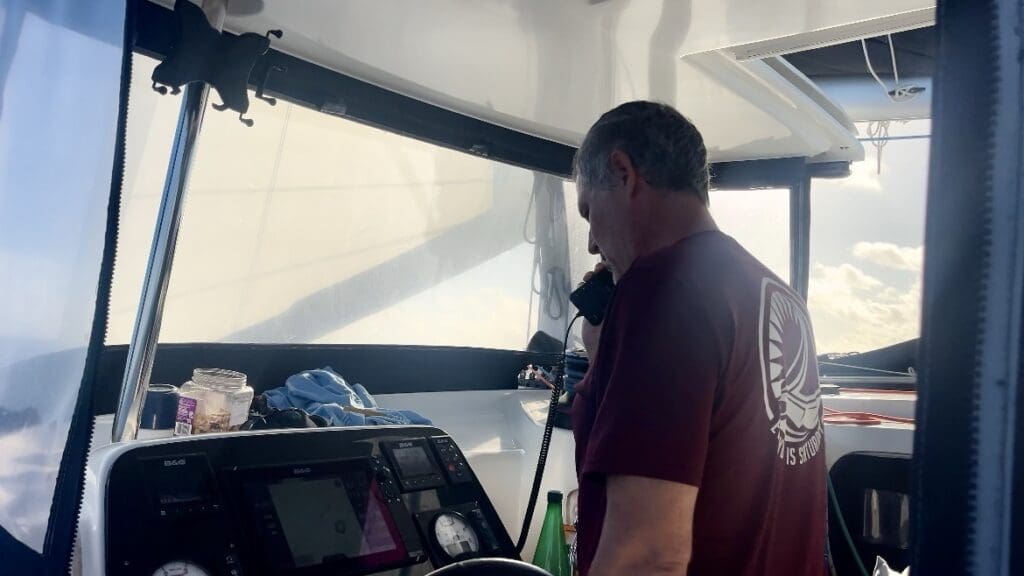
The waves settled down to 4-6ft, so I enjoyed cooking us dinner before settling into the first watch shift of the night, 6pm-9pm. I watched the sun set behind a dense line of squalls on the horizon. We preemptively put another reef in the main.

It’s the end of my shift as I’m posting this. We’ve turned the inverter on to check the weather, but it’s been a relatively calm night so far. Fingers crossed it stays that way.
See ya tomorrow!

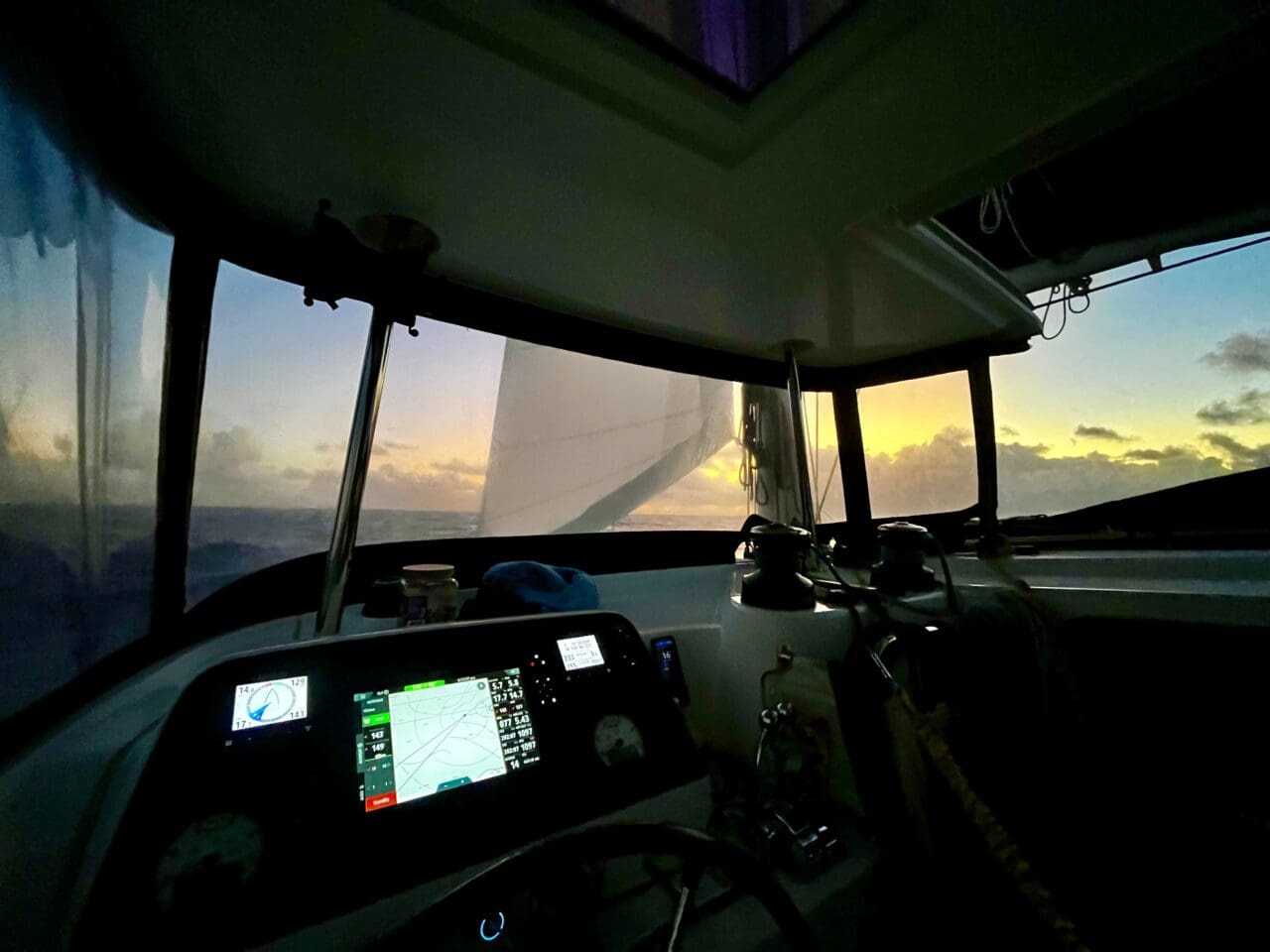
2 Responses
Hi Holly! Josef and I have been following you and Ray on YouTube for a couple of years now–while we sail our 42 around the Med in the summers. Anyway, just want to recommend the podcast “The Rest is History” for staying awake on night shift. Two British historians that have a few years of episodes out there on a wide variety of historical topics–they’re funny and informative. Sometimes I want my shift to be longer just so I can finish an episode. Take care and happy sailing! Lisa
Hi Lisa, thanks for following along! I’m always looking for new podcast recommendations- I’ll have to give that one a listen. 🙂